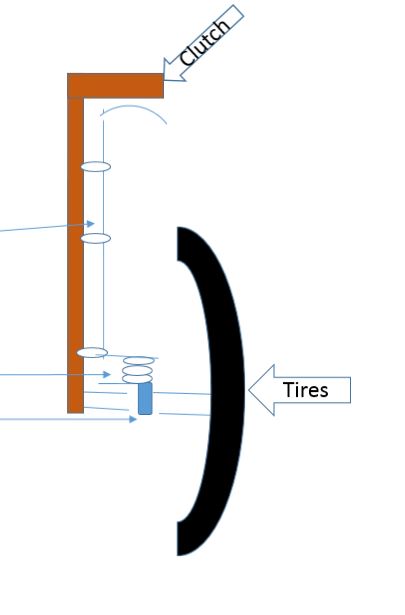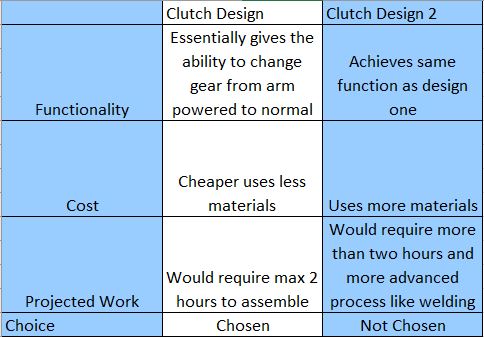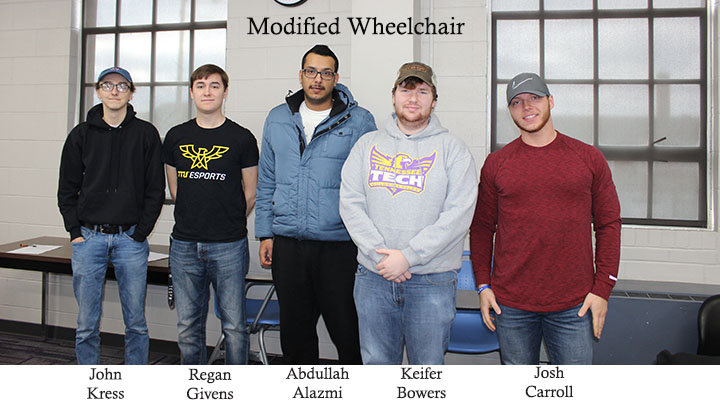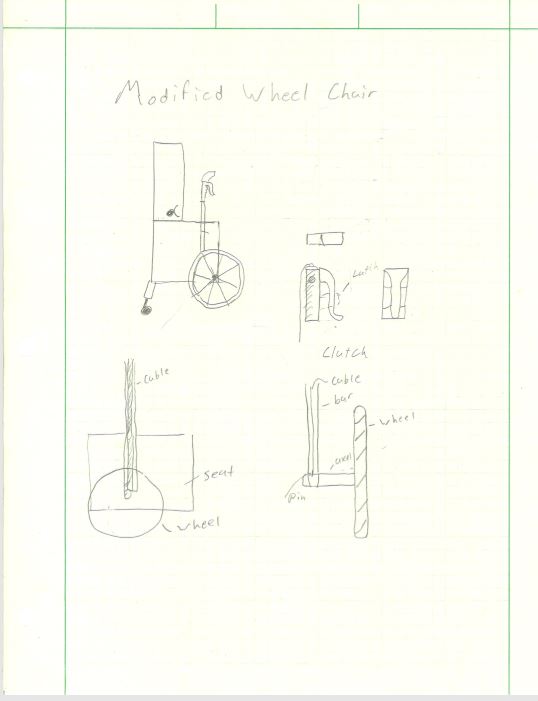Modified Wheel chair
Abstract
This project aims to improve upon the Arm-powered wheel chair from a previous semester. The wheel chair has broken and requires upgrades to be able to allow the user to move the arm-powered handles better as well as being able to move in reverse if necessary. The chair also needs minor quality of life improvements for the user.
Team members
- John Kress
- Regan Givens
- Abdullah Alazmi
- Keifer Bowers
- Josh Carroll
Not Pictured:
- Dr. Stephen Canfield
- Chris Mills
Problem Statement/overview of the need
This wheelchair has had a number of issues since given to the user, and subsequently has broken. Our task is to improve upon the designs of the wheelchair in order to make it more comfortable, easier to power the mechanism to move the chair, enable the chair to go into reverse, and enhance stability so that the chair will not break again.
Design Specifications
- The wheelchair needs to be comfortable for the user to use in day-to-day life.
- The ability for the wheelchair to go in reverse.
- Improvements to the mechanism in which the user powers the chair to move.
- Improvements to overall wheelchair design to ensure that failure doesn't occur.
Background research
On our visit to the Client's home, we were able to procure the old wheelchair that had previously broken down. The parents were able to talk to us about the things they'd like to see changed in the wheelchair's design and functionality. Overall, they stressed the need for the wheelchair to be comfortable, easy to power, and for the chair to be able to reverse.
Additionally, we researched the EIME page for the previous group's attempt at the Arm-powered wheelchair which can be found here: Arm-Powered Wheelchair Fall 2017
Conceptual Design
Design Concept 1
Basic drawing of the wheelchair. In this concept drawing, it shows how the clutch could be implemented to change the movement of the chair from arm powered to general pushing. It works like the brake of a bicycle that pulls a pin to let the arms move freely on the axel. The design also implements a latch that holds down the clutch, and a clip to hold the bars in place when not in use.
Design Concept 2
In this drawing you can see how we will modified wheelchair to make it easily shift from arm powered wheelchair to normal wheelchair. By using bike brakes cable, spring, and pins to makes the wheelchair easily shift.

Design Concept 3
Basic drawing of updated ergonomic designs for the wheelchair. In this concept drawing, it shows how we want to get a bigger chair for the wheelchair. Additionally, we'd like to allow for the back of the chair to have the ability to recline as this has been requested from the parents. The drawing also shows how we'd like to implement a newer headrest on to the chair which will support the user's head and neck.
Evaluate concepts/select candidate

The design was chosen based on how much work and cost would be needed. Design one was seen to be the cheaper and the easier choice out of the two. Design two would need a longer fabrication process that includes welding and milling where design one would at most need to be drilled. Design two was also more expensive of the two especially since we are designing for two sides.
Detailed Design
Description of selected design
We're building a clutch based on the design we have made above. It requires a hand brake with a cable going down the arm of the wheelchair, and when the hand brake is compressed it will pull the pin allowing the chair to be able to go in reverse. The pin will be connected to a spring mechanism so that when the hand brake is released the pin will be pulled back into the proper position and the chair will be able to move forward again. The clutch mechanism will be put on both sides of the handlebars of the wheelchair.
Detailed description of selected design
Analysis
For analysis, we're calculating the mobility of the clutch design as well as the forces required in order to compress the clutch. For our third analysis, we're linking the analysis done previously by the team who worked on the wheel chair as they have done analysis for the previous mechanisms that power the chair.
Engineering analysis 1
Engineering analysis 2
Engineering analysis 3
CAD Drawings
Bill of Materials
Assembly Instructions
We ordered some freecoaster mechanisms to attach to the axel in order to fix the movement issue of the wheelchair not being able to go into reverse. The freecoaster mechanisms work by requiring a small amount of forward movement in the arms before the mechanism engages and actually moves the wheelchair forward. We're also 3D Printing some parts to fix to the chair, which the CAD Models are shown below.
Fabrication Process
Testing and implementation
Describe testing, delivery, how used/received by the family
Photos of Completed design
Insert pictures of the final product
Instructions for safe use
Do not use the device unless supervised by an adult that has been fully understood the safe use of this product. Our wheelchair is safe for day-to-day use by customer in which it was designed for. As with any complex mechanism, there is potential for injury while operating the machinery incorrectly. The wheelchair should be used while sitting completely still and fully on the chair. Additionally, the arm powering mechanism should only be used by firmly grasping the 'arm' mechanism and pushing forward. The wheelchair now has the ability to go in reverse which can be done by simply grabbing the handles on the back of the wheelchair and pulling the chair backwards. This wheelchair is not designed for high speeds or for rough use and should only be used in the safety of a supervised environment.
Project Summary, Reflection
Overall, the project has been a learning experience for all involved. We aimed to do a lot of things to the wheelchair, but as time came to it we realized that the most important thing we could accomplish was to make the wheelchair be able to go in reverse, which was the family's main request. With help from Dr. Canfield and Chris Mills, we've come up with a way to solve the the problem and do it in an efficient way that should solve this issue for the family. Additionally, we competed in the Eagleworks competition and were fortunate enough to be named a finalist team for marketing the wheelchair as a potential business. Overall, this project has allowed all members of the team to experience pitching an idea to investors, working together on making a good solid project, and using problem solving engineering skills to make an existing project better.
We'd like to give a special thanks to Dr. Stephen Canfield for helping us with this project and with the Eagleworks competition. We'd also like to give a special thanks to Chris Mills for helping us finding a solution to our gearing mechanism problem and suggesting the freecoaster mechanism for the wheelchair.






















